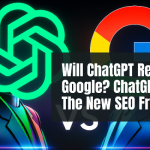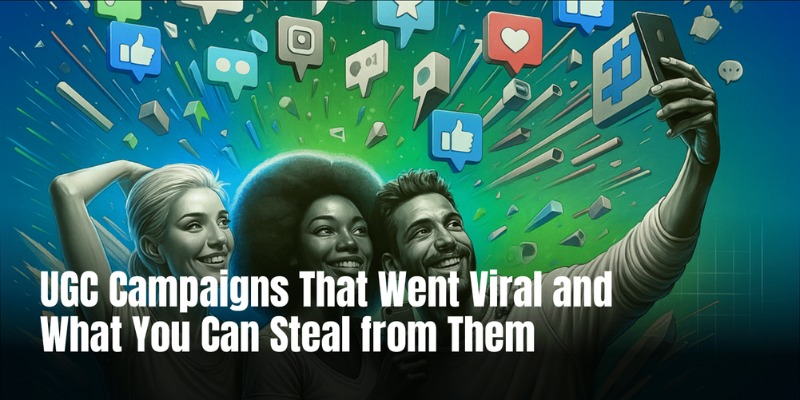10 UGC Campaigns That Went Viral and What You Can Steal from Them

Will ChatGPT Replace Google? ChatGPT & AEO: The New SEO Frontier
July 19, 2025
Why the Future of Marketing Belongs to Full-Stack Marketers
July 30, 2025In today’s digital world, authenticity matters more than ever. People are less likely to trust traditional, polished ads, instead, they prefer real stories and honest experiences. That’s where User–Generated Content (UGC) comes in. Nowadays, it has emerged as the crown jewel of modern marketing, where brands are winning the internet by letting their users do the talking (and creating). UGC isn’t just about asking people to talk about your brand. It’s about building a community, letting your customers become your biggest promoters, and creating excitement that no ad budget can buy.
Here are 10 UGC campaigns that truly went viral, alongside the invaluable lessons your brand can steal from their success:
1. Labubu: The Collector Craze That Broke the Internet
Pop Mart’s Labubu, a quirky “ugly-cute” collectible, became a global sensation. Its viral success wasn’t accidental but it was due to a smart mix of hype, limited availability, and fan excitement, especially through its “blind box” sales (where you don’t know which figure you’ll get). Fans rushed to share unboxing videos and show off their rare collectibles filling social media with buzz.
What You Can Steal:
- The Excitement of Surprise: The blind box concept made people curious and eager to collect, no one knew what they’d get, which created FOMO (Fear Of Missing Out). Can you introduce an element of surprise or limited-edition drops to your product launches?
- Community-Driven Hype: Labubu collectors formed strong online communities around trading, showing off, and discussing their figures. Create spaces like social media groups or forums where your fans can connect, share, and build excitement together.
- Authentic Unboxing Experiences: People love to share their genuine reactions. Design your product and packaging in a way that makes it fun and easy to share.
2. Dubai Kunafa Chocolate: From Craving to Global Craze
A specific chocolate bar from a Dubai chocolatier, filled with pistachio and kunafa, became an overnight sensation on TikTok. It started with one influencer’s viral reaction, quickly flooding the internet with “dupe” recipes, taste tests, and unboxing videos shared by users worldwide.
What You Can Steal:
- Sensory Storytelling: The snap of the seal, the gooey filling, the rich color made the Dubai chocolate highly visual and audibly satisfying. Think about how your product can trigger visual, auditory, or emotional satisfaction in short-form content.
- The Power of Authenticity: The initial viral video didn’t felt staged or polished. It felt real. Don’t over-produce your content; sometimes, the most authentic reactions are the most impactful.
- Replicable Content Formats: The “unboxing and taste test” format was easily repeatable, allowing countless users to participate in the trend, even if they couldn’t get the original product.
3. Glossier: Building a Brand on Selfies
Glossier didn’t just sell beauty products; they sold an aesthetic and a community. From day one, they encouraged customers to share selfies featuring their products, reposting authentic customer photos across their social channels and even on their website. Their Instagram became a mosaic of real faces, not just models.
What You Can Steal:
- Aesthetic Alignment: Glossier’s minimalist, dewy aesthetic was perfectly suited for natural, unedited customer selfies. Define your brand’s visual identity and encourage UGC that aligns with it.
- Empowerment, Not Instruction: They didn’t tell customers how to use their products; they showed how customers were using them. Empower your community to interpret and showcase your brand in their own unique ways.
- Direct Community Engagement: Glossier didn’t just post and walk away. They actively responded to comments, listened to customer feedback, and used it to create new products. They even launched a “rep program” to reward loyal fans and turn them into brand ambassadors. It’s a great example of how direct community engagement builds trust and loyalty.
4. Spotify Wrapped: Personalized Stories Turned Global Moments
Every December, Spotify users eagerly await their “Wrapped” summaries – a personalized, shareable infographic detailing their listening habits for the year. This instantly became a viral phenomenon, with users flooding social media to share their top artists, songs, genres, and even “audio personalities.”
What You Can Steal:
- Personalized, Shareable Data: Spotify took individual data and turned it into a highly personalized, visually appealing story that people wanted to share. Can you offer your customers unique insights or summaries based on their engagement with your brand?
- Create FOMO (Fear of Missing Out): When everyone starts sharing their Spotify Wrapped, even people who don’t use Spotify feel like they’re missing out. This Fear of Missing Out (FOMO) makes them to consider joining the platform next year.
- Build a Yearly Moment: Wrapped has become a cultural moment people look forward to. Can you create a memorable annual event or ritual for your brand that gets people excited to share and be part of it?
5. Coca-Cola: #ShareACoke – Names That Spark Connection
Coca-Cola replaced its logo with popular names and phrases on bottles and cans, encouraging people to “Share a Coke” with friends, family, or someone they knew. This simple concept ignited a global frenzy of people searching for their names and sharing photos online.
What You Can Steal:
- Make It Feel Personal: The customized packaging made each bottle feel unique and special, despite being mass-produced.
- Incentivize Offline to Online: The campaign brilliantly encouraged offline actions (finding a name on a bottle) that naturally led to online sharing.
- Keep It Simple and Relatable: The concept was easy to get and appealed to almost everyone. A simple, universal concept often works best especially when it taps into something people naturally care about.
6. GoPro: Million Dollar Challenge
GoPro challenges its users to submit their best videos shot on GoPro cameras for a chance to win a share of a million-dollar prize. This incentivized users to create incredible, high-quality content showcasing the camera’s capabilities in extreme and exciting ways.
What You Can Steal:
- High-Quality UGC with Incentives: If your product can inspire amazing content, offer real incentives like contests or cash prizes to encourage users to create and share their best work.
- Show, Don’t Tell: Instead of talking about how great GoPro is, they let their users show it with real, exciting footage. Think about how your product can shine through user experiences, not just ads.
- Continuous Content Stream: A challenge like this gives you a steady stream of fresh, engaging content you can share over time keeping your brand active and visible across platforms.
7. Apple: #ShotOniPhone
Apple launched a simple yet powerful campaign asking iPhone users to submit their best photos taken with their devices. The selected images were then featured on billboards, in ads, and across Apple’s social media, turning everyday users into part of the brand’s visual identity all while showing off the iPhone’s camera power.
What You Can Steal:
- Highlight Product Capabilities: Apple let the product speak for itself through stunning, user-created content. It’s a powerful way to demonstrate what your product can really do.
- Aspirational Content: By highlighting high-end, professional-looking photos, Apple made users want to match that level of quality, pushing more people to engage creatively.
- Credit and Recognition: Giving photographers credit and exposure made them feel valued and encouraged others to join in. Recognition is a simple but effective motivator.
8. LEGO Ideas: Fans Become Creators
LEGO created a platform where fans can submit their own set designs. If a design gets 10,000 votes from the community, it’s reviewed by LEGO, and if approved, it can become an official product, with the fan designer receiving a percentage of sales.
What You Can Steal:
- Co-Creation and Ownership: Involve your users in creating products or content. It gives them a voice and deepens their connection to your brand.
- Gamification and Incentives: Voting, milestones, and real rewards make participation exciting and motivating. It turns fans into active players.
- Deep Community Loyalty: When people feel like they’ve contributed to something real, they become deeply loyal and proud brand advocates.
9. Aerie: #AerieREAL -Unfiltered and Unapologetic
Aerie committed to using unretouched photos of real women in all their advertising, launching the #AerieREAL campaign. They invited customers to share their own unedited images using the hashtag promoting body positivity, self-love, and authenticity.
What You Can Steal:
- Values-Driven UGC: Aerie aligned its UGC campaign with its core message of authenticity. When your campaign reflects what your brand truly stands for, it builds deeper trust and engagement.
- Social Impact: Campaigns that stand for something beyond just selling products often generate stronger emotional responses and more meaningful shares.
- Inclusive Representation: Showing real people with diverse body types made the brand far more relatable and appealing, connecting with a wider audience.
10. Starbucks: #RedCupContest -A Holiday Tradition Built by Fans
Every holiday season, Starbucks encourages customers to decorate their iconic red cups and share their creations on social media using a specific hashtag #RedCupContest. This simple tradition has generated millions of impressions and become a highly anticipated annual event.
What You Can Steal:
- Seasonal Traditions: Create a recurring, seasonal event or theme that your customers can look forward to and participate in.
- Simple Creativity: The campaign required only a red cup, a little creativity, and a photo – low effort but high engagement. Make participation simple and inclusive.
- Brand Iconography: Starbucks used their red cup—a symbol already tied to the brand and the holidays. Leverage your own iconic visuals or products to build instant recognition and shareability.
Conclusion:
The common thread across all these successful UGC campaigns is that they didn’t force it. They created products and experiences people wanted to share, then gave them a simple, often hashtag-driven, way to do it. Whether you’re a global brand or a scrappy startup, you can ride the same wave by listening more, controlling less, and letting your audience shine. Give people a reason to tag you, and watch your brand’s story unfold through the most trusted voices – your customers.

